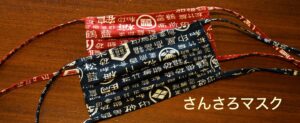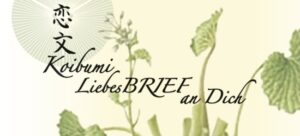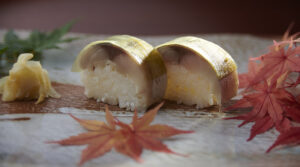Shōchū, sometimes referred to as "Japanese vodka" or "Japanese liquor," is becoming increasingly popular in Japan.
Young Japanese in particular love this high-proof drink, which is well suited for mixed drinks due to its subtle intrinsic taste. But Shōchū is also very popular served neat, on ice or with hot water. Here you will get an overview of everything you need to know about Shōchū and show you how versatile this drink can be.
What is Shōchū?
The Shōchū, in contrast to the Sake is a distilled beverage, for the production of which, however, similar to sake, Kōji (special mold cultures) are also required.
To obtain a good Shōchū, it is important to have a starting material that is as starchy as possible. Thus, Shōchū can be made from rice, barley or buckwheat, among others. This enormous range of ingredients, several of which can also be used for the same Shōchū, ensures different flavors and lots of variety. Basically, the flavor of Shōchū tends to be earthy and nutty, but varies greatly depending on the crop from which it is made.
Where does Shōchū come from?
Originally, Shōchū probably originated in China or Korea and found its way to Japan from there.
Today, Shōchū is primarily produced around the port city of Kagoshima on the island of Kyūshū, located in southern Japan. But Shōchū also has a long tradition in other areas on Kyūshū Island. For example, the Kuma region in the south of Kumamoto Prefecture is known for mild and high-quality Shōchū. The trademarked name "Kuma Shōchū" is used for Shōchū originating from this area of Kyūshū.
A fine example of the importance placed on quality in the production of Shōchū in this part of Japan is a very readable interview with Ms. Takahashi the owner of a Shōchū distillery in Taragi-machi. In one Interview on Japandigest it becomes clear with how much dedication and, above all, expertise Shōchū is produced. In order to accommodate consumer tastes, for example, some production processes have been adapted. This applies above all to the distillation process, which, unlike in the past, is carried out with less pressure and at lower temperatures in order to obtain a milder and fruitier taste.
How is Shōchū made?
Similar to Sake Shōchū is produced by fermenting a starch source and adding molds known as Kōji.
Unlike sake, however, Shōchū is still distilled after fermentation and then stored for several months before being released to the market. The Kōji used for Shōchū is a special white Kōji. For very high-proof and strong Shōchū, yellow Kōji is also occasionally used, which is otherwise mainly used for the production of sake and is very sensitive.
What types of Shōchū are there?
Essentially, there are two types of Shōchū, namely at least double-distilled Kōrui Shōchū (焼酎甲類, Shōchū Kōrui) and single-distilled Otsurui Shōchū (焼酎乙類), which is also known as Honkaku (本格焼酎, Honkaku Shōchū).
In particular, Kōrui Shōchū is rather tasteless and almost odorless, which is why it is primarily used for mixing with other drinks. Otsurui Shōchū, on the other hand, is called a true Shōchū and is characterized by a pleasant taste of its own.
The exact flavor nuances of Shōchū are very closely related to the starch source used, which, unlike sake, can be freely selected for Shōchū.
Typical basic ingredients for Shōchū
Shōchū does not have to be produced from rice like sake, but can be made from many different starchy foods. In particular, the following ingredients are typically used for Shōchū in Japan:
- Barley (麦焼酎, Mugi Shōchū)
- Sweet potato (芋焼酎, Imojōchū)
- Rice (米焼酎, Kome Shōchū)
- Sugar cane (黒糖焼酎, Kokutō Shōchū)
Since it is very important that the starting ingredient for Shōchū contains a lot of starch, ingredients such as violet, buckwheat and muscovado sugar can also be used in addition to the listed ingredients. In total, there are 53 basic ingredients approved for Shōchū production in Japan. Even milk is used in Gyūnyū Shōchū (牛乳焼酎) - although the main ingredient here is actually rice in the end as well.
Other, rarer basic ingredients for Shōchū
Mugi Shōchū
This Shōchū is obtained from barley and is considered the most widely used in Japan. Its taste is rather neutral and does not offer any unusual flavors. Mugi Shōchū is usually very clear. However, there are also varieties that are aged in oak barrels, which gives them an amber appearance. Due to its mild character, Mugi Shōchū can be drunk well neat with ice.
Imo Shōchū
Imoshōchū is Shōchū made from sweet potatoes, which is said to have a rather strong flavor of its own. For this reason, this Shōchū is very suitable as an accompaniment to rich food such as Japanese noodle soup Rāmen. The quality of Imojōchū depends very much on the quality of the sweet potato used, which is why there can be immense differences in taste between different Imojōchū.
Kome Shōchū
Kome Shōchū is the name given to Shōchū based on rice as the basic ingredient. Only short-grain japonica rice is used, which gives it a certain inherent flavor. Unlike other Shōchū specialties, Kome Shōchū often has a slightly sweet taste and is more reminiscent of sake than other Shōchū thanks to the common base ingredient.
Kokutō Shōchū
Shōchū made from sugar cane is called Kokutō Shōchū and is sometimes somewhat fruitier than other Shōchūs. Especially dishes that are strongly influenced by soy sauce taste very good if you try a delicious Kokutō Shōchū with them. Highly recommended is the Sato No Akebono Gold Shōchū, which comes from Amami-guntō Island located in Kagoshima Prefecture and is made of brown cane sugar. This unique Shōchū, which is 43% vol. Alcohol content for a Shōchū is very high percentage, but captivates not only by its fine taste, but also by its slightly golden color, which he gets through about three years of storage in oak barrels.
Kuri Shōchū
Kuri Shōchū made from sweet chestnut is also something special in Japan and is especially known for its almost intense aroma.
Gyūnyū Shōchū
Also very exotic is Gyūnyū Shōchū, which is made from milk and convinces with its very mild aroma. Since milk is by far not as common in Japan as it is in Germany, however, this is likely to be a rather exotic treat...
Awamori
Awamori Shōchū, who comes from the island of Okinawa, occupies a special position.
In fact, unlike all other Shōchū varieties, Awamori is not spiked with white Kōji mold, but with black.
In addition, Awamori uses a different rice than is normally used. This is because indica rice originating from Thailand is used for it, which is longer-grained than the japonica rice commonly used for Shōchū production. Some experts also see Awamori as a related beverage rather than Shōchū because of these differences. The alcohol content of Awamori is often higher than Shōchū, often around 40 %, but we have also experienced 60 %.
Shōchū as an alternative to the European liquor
By Japanese standards, Shōchū is very high-proof. This is because the alcohol content of Shōchū ranges from 25 to 43% vol.
This is not very much compared to European spirits, but it still ensures that good Shōchū will enrapture even liquor lovers.
By the way: an exciting cross between Japanese flavors and southern German-Austrian schnapps is our own quite exclusive handmade yuzu spirit. Check it out!
What is the aroma of Shōchū?
As mentioned, Shōchū is not known for having a very intense flavor. This is also true in relation to normal Shōchū that has been distilled more than once or is made from relatively tasteless base materials such as gesture or rice.
But the more intensively you study the Shōchū spirit, the more nuances you will perceive. Especially when a Shōchū is made from rather exotic ingredients like buckwheat or sweet chestnut. Shōchū are considered more flavorful if they were distilled from sweet potato or sugar cane. Basically, Shōchū usually lacks fruitiness and is a rather dry drinking pleasure.
Ideal as an accompaniment to food - this is how Shōchū presents itself.
For us Europeans, the idea of enjoying an alcoholic drink other than wine or beer with a meal is rather foreign. Spirits are actually only served as an aperitif or digestif. This is completely different in Japan, however, because both shōchū and Whisky (as a highball) are often drunk directly with food. In terms of taste, Shōchū goes perfectly with fish, for example. But full-bodied dishes also unfold a special magic when accompanied by a selected Shōchū.
How is Shōchū drunk?
Of course, the detail-loving Japanese have devised numerous ways to best enjoy Shōchū. Here are the popular variants.
Straight (ストレート)
Honkaku Shōchū with an alcohol content of about 20 percent is best drunk neat, without any additives. It is ideal to enjoy the original aroma and taste of Shōchū.
On the rocks (オン・ザ・ロック)
Enjoy with ice cubes. Suitable for Shōchū with high alcohol content. It is important that the glass is first filled with ice and sufficiently chilled before pouring the Shōchū.
Mizu-wari (水割り)
Mix with water. The golden ratio of Shōchū and water is 6:4, that is, six parts Shōchū and four parts water. "Maewari (前割り)" is also a recommended way of mixing the Shōchū with water in advance and letting it sit for a day, as this makes the Shōchū extra soft.
Soda-wari (ソーダ割り)
Mix with soda water. Especially recommended in summer, as it is refreshing and easy to drink. It would also be good to add citrus fruits such as limes or lemons to refresh the taste.
Oyu-wari (お湯割り)
Recommended for drinking in winter mixed with hot water. Pour the hot water first and then the Shōchū so that the aroma of the Shōchū mixes with the hot water and you can also enjoy the fragrance.
Umeboshi-wari (梅干し割り)
Simply add umeboshi (Japanese salt plums) to the Shōchū the way you like to drink it - on ice, with water or hot water. The addition of Umeboshi softens the typical smell of the Shōchū and makes it a refreshing drink.
Kan-tsuke (燗つけ)
The day before, the Shōchū is mixed with desired amount of water, which is then warmed in a sake vessel, called "Joka (じょか)" in Japanese. This is still the ultimate way to drink Shōchū, and many connoisseurs believe that only by heating it can one enjoy the flavor, sweetness, and deep, smooth aroma of Shōchū.
Shōchū is often offered ready mixed in Japan
Due to its subtle taste, Shōchū is often used for mixing with other drinks. For example, the mixed drink Chūhai, which consists of Shōchū, soda and fruit flavoring, is very popular. The flavors on offer include lemon, grapefruit and apple. This drink, which is especially appreciated by young Japanese, is even available ready-mixed in cans in Japan. Another common recipe for a drink with Shōchū involves mixing it with oolong tea. If you prefer to try Shōchū straight, you can spice it up with a little ice in the summer or add hot water in the winter.
Sake and Shōchū - two drinks that are similar, but have a different character.
The richly flavored Japanese "rice wine" sake is actually brewed like a beer, in a special process of multiple fermentation. Probably the biggest difference between the production of sake and shōchū is that shōchū, in addition to being fermented with Kōji is still distilled. The use of different raw materials is also noticeable in terms of both quality and taste. In addition, different Kōji molds are sometimes used in the production of sake than in shōchū. This ultimately results in a difference in taste and aroma, as sake tends to be fruity and full-bodied, while shōchū can be described as dry and earthy.
Shōchū is also considered less traditional in contrast to sake, which is already clear from the fact that Shōchū translates loosely as "brandy," so it is seen more as a simple spirit.
Last but not least, Shōchū has a higher alcohol content than sake due to the distillation process. Thus, the alcohol content of sake is in the range of 15% by volume, while Shōchū has an alcohol content of about 25% by volume. Even though many producers now produce very sophisticated variants of this drink, Shōchū usually does not come close to the quality of high-quality sake.
Nevertheless, Shōchū has its firm place in Japanese drinking culture and is increasingly finding its way to Europe, especially in the variants on the rocks or oyuwari.
With us in the Restaurant sansaro in Munich we always keep different varieties Shōchū for you to try - just ask for them!
Sources:
https://de.wikipedia.org/wiki/Sh%C5%8Dch%C5%AB
https://taz.de/Japanischer-Shch-Schnaps/!5593277/
https://www.nipponboutique.com/de/auswahl-an-likoren-aus-japan/6340-japanischer-shochu-shoshu-japan-4904670022736.html
https://www.japandigest.de/reisen/essen/sake-und-shochu-in-deutschland-interview/
Click on the button below to download the content of mixology.eu.
https://www.rumundco.de/magazin/shochu/
https://www.japandigest.de/reisen/essen/trinken/alles-ueber-japans-alkohol/
https://galumbi.de/blog/2020/03/17/sato-no-akebono-gold-shochu-negroni-amami-breeze/
Click on the button below to load the content of galumbi.de.


